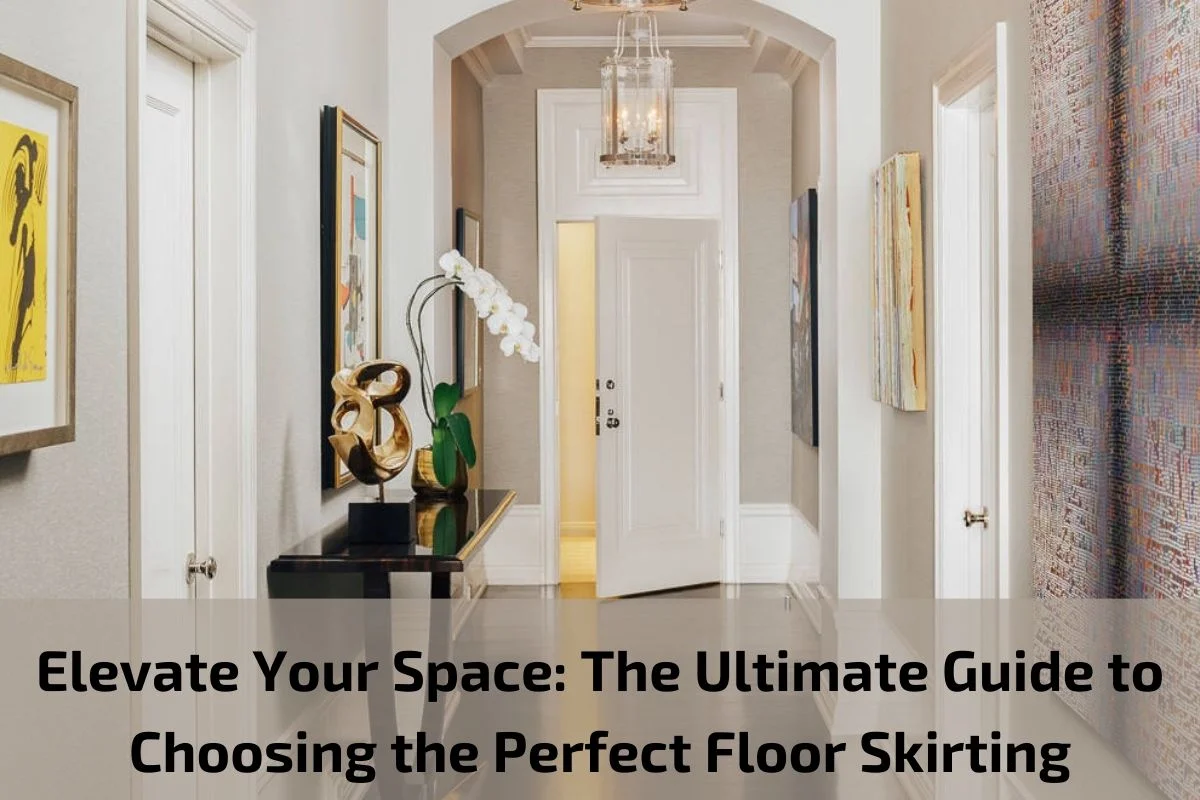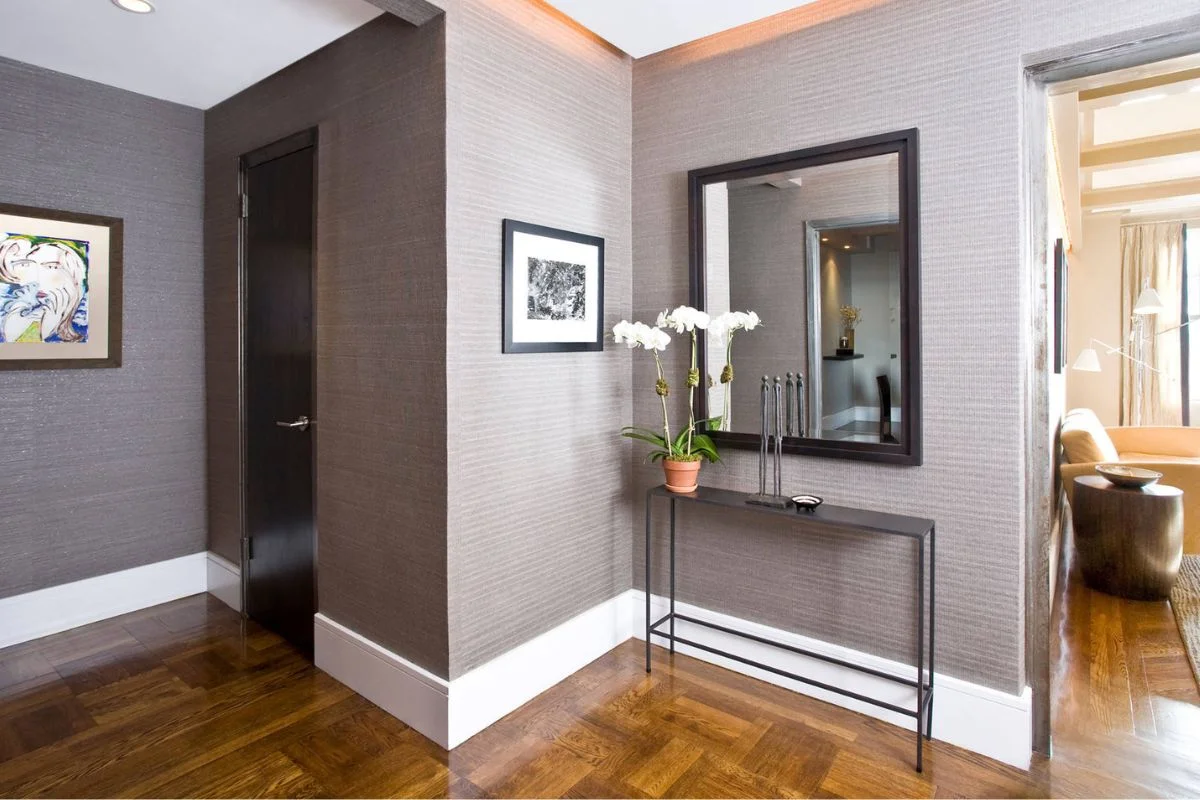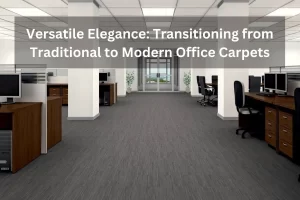In the realm of interior design, every detail counts, and one often-overlooked element that can significantly impact the overall aesthetic is floor skirting. Far more than a mere finishing touch, floor skirting plays a crucial role in elevating the visual appeal of a space while serving practical functions. As we embark on the journey of enhancing our living spaces, it’s essential to delve into the nuances of choosing the perfect floor skirting. Join us in this ultimate guide, where we explore the various styles, materials, and installation techniques that will transform your floors from mundane to magnificent. Discover how the right floor skirting can seamlessly tie together the elements of your interior design, creating a harmonious and polished look that truly elevates your space.
Importance of Floor Skirting in Interior Design
Floor skirting, often considered a subtle and inconspicuous aspect of interior design, plays a vital role in enhancing the aesthetics and functionality of a space. This seemingly small detail, when chosen and executed thoughtfully, contributes significantly to the overall visual appeal and coherence of an interior. Here are several reasons highlighting the importance of floor skirting in interior design:
Seamless Transitions: Floor skirting provides a seamless transition between the floor and the walls, creating a polished and finished look. It acts as a visual buffer, covering the joint between the floor and the wall covering, ensuring a smooth and cohesive appearance.
Aesthetic Enhancement: Beyond its functional role, floor skirting serves as a design element that can enhance the overall aesthetic of a room. The right choice of skirting profiles, styles, and finishes can complement the interior design theme, adding a touch of elegance, warmth, or modernity as desired.
Concealing Imperfections: Walls and floors rarely meet perfectly, and there may be gaps, uneven edges, or irregularities. Floor skirting helps conceal these imperfections, providing a clean and finished look to the room. This is particularly important in older buildings or those with less-than-perfect construction.
Protection Against Wear and Tear: Floor skirting acts as a protective barrier, preventing the lower part of the walls from damage caused by furniture, vacuum cleaners, and foot traffic. This is especially crucial in high-traffic areas where walls are more susceptible to scuffs, scratches, and dents.
Hiding Cables and Wiring: In modern homes where technology is ubiquitous, hiding cables and wiring is a common challenge. Floor skirting offers a convenient solution by providing a discreet space to conceal these elements, maintaining a clean and organised appearance.
Enhanced Hygiene and Cleanliness: By covering the floor-wall junction, skirting helps prevent dust, dirt, and debris from accumulating in the often hard-to-reach gap. This not only contributes to a tidier space but also simplifies cleaning and maintenance efforts.
Versatility in Design: With a wide range of materials, profiles, and finishes available, floor skirting offers design versatility. Homeowners can choose from classic wood to contemporary PVC options, allowing for customization that suits various interior styles and preferences.
Defined Architectural Detail: Floor skirting can be an essential architectural detail that defines the character of a room. Whether it mimics the historic charm of traditional spaces or complements the clean lines of a modern design, skirting contributes to the overall architectural identity of a room.
Benefits of Floor Skirting
Floor skirting, often considered a minor detail in interior design, holds several key benefits that contribute to both the aesthetic and functional aspects of a space. Here are the significant advantages of incorporating floor skirting into your interior design:
Aesthetic Enhancement:
Polished Finish: Floor skirting provides a finished and polished look to a room by concealing the joint between the floor and the wall, creating a cohesive and visually appealing transition.
Concealing Imperfections:
Covering Gaps: Skirting helps hide gaps and irregularities between the floor and walls, ensuring a smooth and flawless appearance, especially in older or less perfectly constructed spaces.
Protection Against Wear and Tear:
Preventing Damage: Skirting acts as a protective barrier, safeguarding the lower part of the walls from potential damage caused by furniture, vacuum cleaners, and accidental impacts.
Versatility in Design:
Customization Options: With various materials, profiles, and finishes available, floor skirting offers versatility in design, allowing homeowners to choose options that match the overall style and theme of their interior.
Cable and Wiring Management:
Concealing Wires: Skirting provides a discreet space for hiding cables and wiring, addressing the challenge of managing technology-related elements in a way that maintains a neat and organised appearance.
Hygiene and Cleaning Benefits:
Reducing Dust Accumulation: By covering the floor-wall junction, skirting minimises the accumulation of dust and debris in hard-to-reach areas, contributing to a cleaner and more hygienic living environment.
Architectural Detail:
Defining Spaces: Floor skirting can be a crucial architectural detail that defines the character of a room, whether it’s to add a touch of tradition or to complement a more modern design aesthetic.
Easy Maintenance:
Simplified Cleaning: Skirting makes cleaning easier by preventing dust and dirt from settling in the gaps between the floor and walls, resulting in less time and effort required for maintenance.
Temperature and Humidity Control:
Minimising Drafts: In some cases, skirting can help minimise drafts by sealing gaps, contributing to better temperature and humidity control within a room.
Increased Durability:
Protecting Wall Finishes: Skirting protects the lower part of walls from scuffs and marks, contributing to the longevity and durability of wall finishes.
Choosing the Right Floor Skirting for Your Space
Selecting the appropriate floor skirting for your space is a crucial decision that goes beyond mere aesthetics. The right choice can enhance the overall look of a room while providing practical benefits. Here’s a guide on how to choose the perfect floor skirting for your space:
Matching with Flooring Types:
- Consider Material Compatibility: Choose a floor skirting material that complements your flooring type. For example, if you have hardwood floors, wooden skirting might provide a seamless match, while PVC or MDF options can work well with laminate or tile flooring.
Coordinating with Room Styles:
- Align with Interior Design Theme: Ensure that the chosen skirting aligns with the overall style of the room. For traditional interiors, classic moulding or wooden skirting may be suitable, while modern spaces could benefit from sleek, minimalistic profiles.
Considering Height and Width:
- Proportional Sizing: Pay attention to the height and width of the skirting. Taller skirting tends to make a room look more grand, while shorter options might suit smaller spaces. The width should be proportional to the size of the room and the height of the walls.
Assessing Maintenance Requirements:
- Choose Based on Lifestyle: Consider the maintenance requirements of different skirting materials. Wooden skirting may require more upkeep than PVC or MDF options. Factor in your lifestyle and the level of maintenance you are willing to undertake.
Budget Considerations:
- Balance Quality and Cost: Determine your budget for floor skirting and explore options that strike a balance between quality and cost. While high-end materials may offer a luxurious look, there are budget-friendly alternatives that provide a polished appearance.
Color Coordination:
- Harmonise with Wall Colors: Ensure that the colour of the skirting complements the wall colour. A well-coordinated colour scheme contributes to a harmonious and visually pleasing interior.
Personal Preferences:
- Express Your Style: Consider your personal preferences and style. Whether you prefer a classic, ornate look or a sleek and modern design, your choice of skirting should align with your individual taste.
Installation Ease:
- DIY or Professional Installation: Evaluate the complexity of the installation process. If you’re a DIY enthusiast, opt for skirting that is easy to install. Alternatively, if you prefer professional installation, choose materials that are conducive to that process.
Functionality:
- Evaluate Practical Benefits: Beyond aesthetics, consider the practical benefits of the skirting. If you need a solution for hiding wires or providing protection against wear and tear, choose a skirting style that fulfils these functional requirements.
Sample Testing:
- Get Samples: Before making a final decision, obtain samples of your preferred skirting options. Test how they look against your flooring and wall colours in different lighting conditions to ensure satisfaction.
Maintenance Tips of Floor Skirting
Maintaining floor skirting is essential not only for preserving its aesthetic appeal but also for ensuring its functionality over time. Here are some practical maintenance tips to keep your floor skirting in top condition:
Regular Cleaning:
- Dust and Debris Removal: Wipe down the skirting regularly with a dry or slightly damp cloth to remove dust and debris. Pay attention to corners and grooves where dirt can accumulate.
Periodic Deep Cleaning:
- Use Mild Cleaning Solutions: For a more thorough clean, especially if there are stains or dirt buildup, use a mild cleaning solution. Mix a small amount of mild detergent with water and clean the skirting with a soft cloth.
Avoid Harsh Chemicals:
- Gentle Cleaning Agents: Avoid using harsh or abrasive cleaning chemicals, as they can damage the finish or colour of the skirting. Stick to mild solutions to protect the material and maintain its appearance.
Address Stains Promptly:
- Immediate Attention: If you notice any spills or stains on the skirting, address them promptly. The quicker you clean a stain, the easier it is to remove without causing damage.
Protecting Against Impact:
- Be Mindful of Furniture: Take care when moving or rearranging furniture to prevent impacts on the skirting. Pads or buffers on furniture legs can help minimise the risk of scratches or dents.
Repairing Minor Damage:
- Fill in Gaps and Cracks: Periodically inspect the skirting for any minor gaps or cracks. Use appropriate fillers or sealants to address these issues promptly and prevent further damage.
Regular Inspection:
- Check for Wear and Tear: Conduct regular visual inspections to identify any signs of wear and tear, such as chipping, peeling, or discoloration. Addressing these issues early can prevent more extensive damage.
Climate Considerations:
- Adapt to Climate Changes: If your home experiences significant temperature or humidity fluctuations, be mindful of how these changes might affect the skirting material. Choose materials that are suitable for your specific climate.
Protecting Against Water Damage:
- Ensure Proper Sealing: If your skirting is in areas prone to moisture, such as kitchens or bathrooms, ensure that it is properly sealed to protect against water damage. Water-resistant sealants can be applied to wooden skirting.
Professional Inspection:
- Periodic Professional Check-Up: Consider having a professional inspect the skirting periodically, especially if it’s part of a larger interior renovation. Professionals can identify and address issues that may not be immediately apparent.
Conclusion
In conclusion, while floor skirting may seem like a minor detail in the grand scheme of interior design, its importance becomes evident in the seamless blend of aesthetics and functionality it brings to a space. The careful selection of floor skirting can transform a room, providing a polished finish and contributing to the overall visual harmony. From concealing imperfections to protecting walls against wear and tear, the benefits of floor skirting extend beyond mere decoration.





